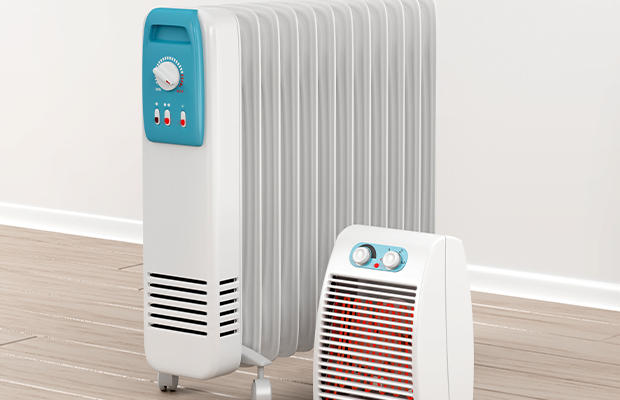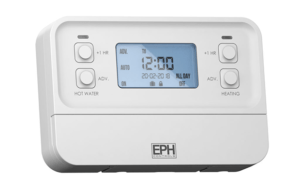With winter coming, energy bills are among the biggest problems families face. Among other things, as the living cost problem keeps growing, a lot of people find it essential to find a low-cost way to keep their homes warm.
One of the most preferred types of heating options for many people is electric storage heaters. On the other hand, comprehension of electricity consumption is a factor that greatly influences one’s choice.
In this article, we are going to explain the energy use of storage heaters and offer helpful information about the related expenses to guide homeowners in choosing suitable heating solutions.
How do modern storage heaters work?
Modern storage heaters generate much energy and heat that is stored overnight, often during off-peak hours when the demand on the national grid is lower. The stored energy is kept in internal ceramic or clay bricks. The heat that is stored during the day would get gradually released to give warmth to the house.
They are made with an insulating system in order to conserve heat for a longer period of time. Furthermore, they take advantage of flat-peak energy consumption, so decreasing electricity costs can be achieved. The ability of these technologies to cooperate with off-peak economy tariffs, where the savings are huge, is one of the key benefits.
Why is it important to know the energy consumption of your storage heaters?
When the 6 million UK homes’ energy bills reach £2,000 each year, the monitoring of power consumption for storage heaters becomes very important for these homes.
However, the electricity storage heaters are cost-effective. When inefficiently used, it can trigger a huge rise in the bills during peak hours.
To decide whether the night storage heating system is the best solution, you need to know the nighttime electricity tariff and ensure that the controls for the heater are used properly.
Factors that affect electricity consumption of night storage heaters
Several factors influence the electricity consumption of storage heaters, affecting their running costs
Heater Size:
The storage heater is sized according to the energy consumption rate. Large heaters will consume more electric power to heat a room. The right heater size is a must to avoid wasting money and increasing bills.
Types of heaters:
Numerous storage heater systems, e.g., manual, auto, combined, fan-assisted, and high-heat retention, differ in their energy usage. The modern-day models come with upgraded features that include electronic temperature control mechanisms and sensors and help monitor usage, thus enabling and optimizing energy efficiency.
Thermostat Settings:
Manual heaters have been around for ages without the need for a thermostat. This reduces heating efficiency. The newest heaters with thermostatic control have improved energy efficiency by regulating the temperature.
Room Insulation:
The level of insulation in a room determines energy efficiency. Efficient insulation proves rooms warm up for a long time, further reducing the duration and expenses of the heater. Differently, heated rooms with poor insulation lose heat quickly, so energy consumption must be increased to provide comfort.
Seasonal Variation:
Storage heaters may need more energy in the winter for warmth, yet minimal energy may be needed in the summer. Seasonal changes influence energy use, as lower consumption during warmer periods results in lower energy bills.
Estimating electricity consumption of electric storage heaters tariff
Coming up with the electricity consumption of storage heaters is explained by analyzing their power surface cost guide update and estimate. It is the brand’s identification or an online search of the brands that can do this.
Calculation:
To calculate the consumption, use the formula: P x T x (p/kg).
For example, we would pay for a 0,85 kW heater for 7 hours at the rate of 34p/kWh will be around £2.02. Estimated electric storage heater running costs for 7 hours include 1.7 kW=£4.05, 2.55 kW=£6.07, and 3.40 kW=£8.09 respectively.
Reduce the electricity consumption of storage heaters:
Maintenance:
Particularly, the regular condition tests serve to ensure proper operating and long service life. A maintenance program that will be helpful in efficiency enhancement and resolve problems if they occur.
Optimal Usage:
Selecting a heater that fits your home size will be effective against waste. The size of the room and the desired comfort level can be adjusted by turning the output dial and the input setting can be checked from season to season.
Explore Alternatives:
Storage heating gas, for instance, may be used as the central heating source. Alternatively, heat pumps could be considered.
Improve Insulation:
Reduce heat loss through cracks and improve air passage to complete the required work.
Cost comparison:
Heat storage units as compared to the others.
If you are searching your options when it comes to alternative heating systems, there are some factors you’ll need to consider:
- The space to be heated is the size.
- What type of electricity rates apply to the energy supplier you use?
- If you want to get into a newer or more advanced and efficient technology.
If you want to get into a newer or more advanced and efficient technology.
In addition, you’ll also compare the purchase and installation costs, operational, safety, appearance, and running costs.
For instance, a gas central heating system is one of the favorite options in the UK. The only low investment of the storage heaters is the maintenance cost in comparison to others. Electric heating, however, is not a cost-effective solution for large areas.
While night storage heaters use off-peak hours, they still lose energy due to perspiration. The heater might not be able to hold for long when the chilly morning sets in, as it is not easy to tell what the weather conditions will be. It means using peak-stress electricity more often.
FAQs
How much do storage heaters cost?
The prices of storage heaters may differ due to the brand, size, features, and efficiency. The price of the basic units goes from £150 to £500, while the advanced models from £700 to £1,500. The installation cost depends on the level of difficulty and the need of the additional electricity supply.
Is a storage heater right for me?
To find out if a storage heater fits your needs or not, you are likely to take such factors as your heating preferences, your budget, and your house setup into consideration.
Are electric storage heaters expensive to run?
Running electricity storage heaters may be more expensive because electricity is generally more expensive than gas.
How to know how many kW my electric heaters use?
Simply inquire by checking the heater specifications or label for the kW rating.
How many watts does a heater use?
The usual heater wattage is different (500-1500W).
Do electric heaters consume less energy at low settings?
Low settings consume less energy.
How many amps does an electric heater use?
Watts and volts are two factors that determine amp usage.
How much does it cost for a heater to run per hour?
Cost per hour relies on wattage and electricity rate.





Add comment